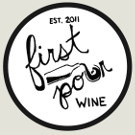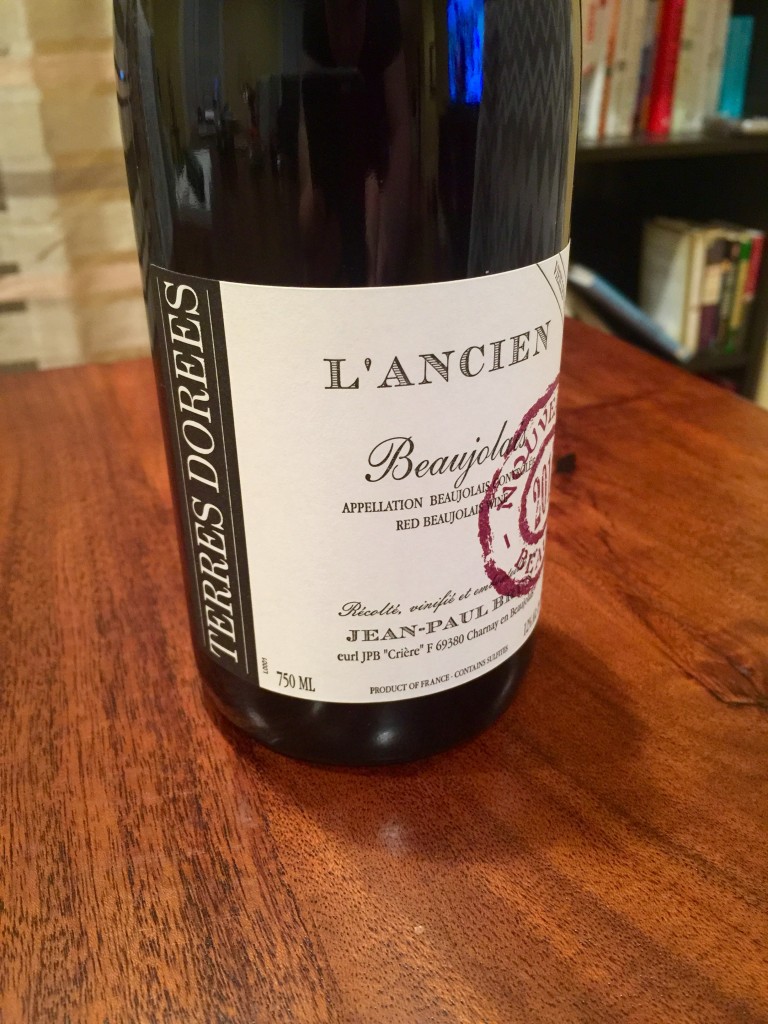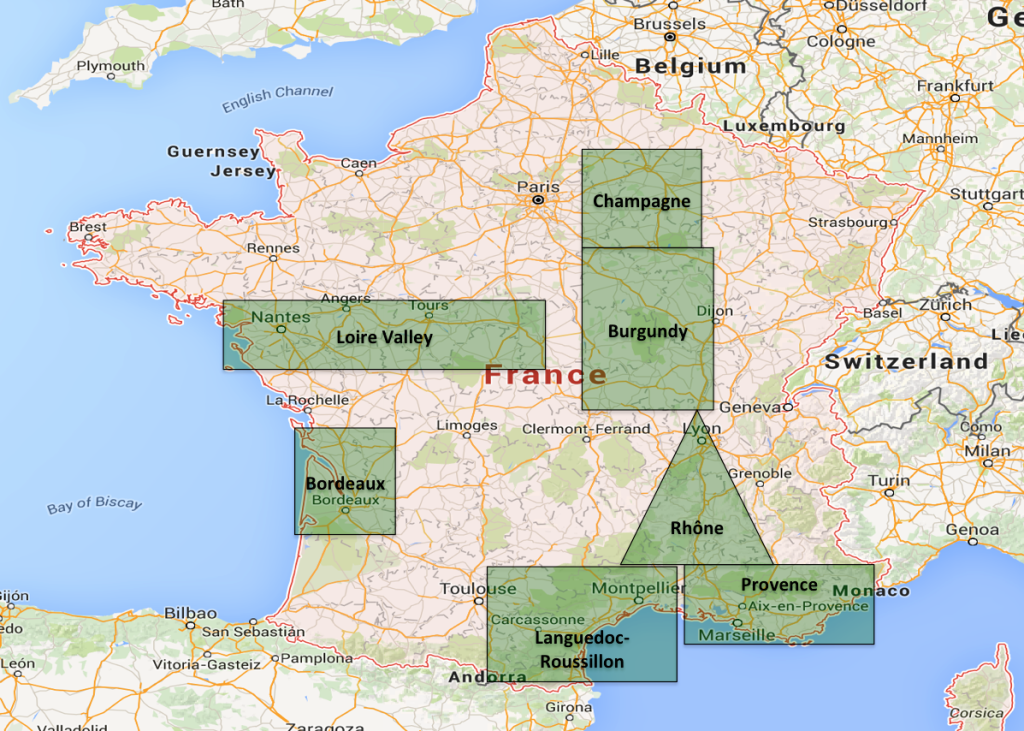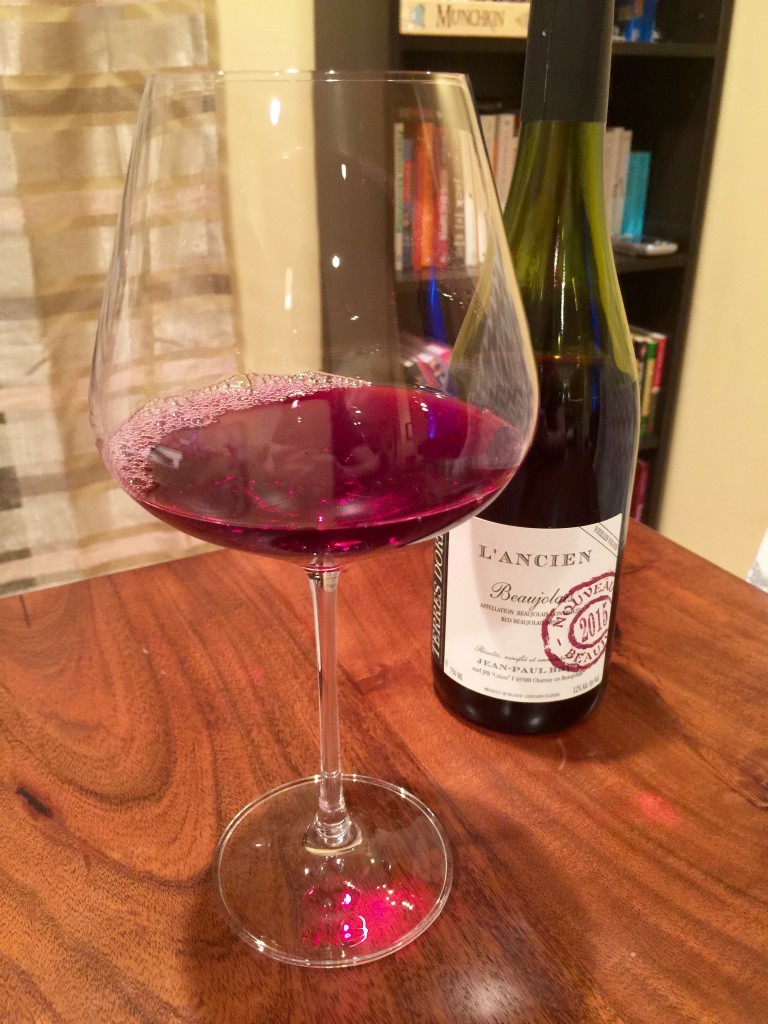Although the marketing may lead you to believe otherwise, Beaujolais isn’t just a wine for the end of November. Although Beaujolais Nouveau has made it’s stamp with artsy bottles and fun flavors of melted cherry jello, there’s serious wine to be had in the region, if you’re willing to look.
Beaujolais
From the standpoint of governance, Beaujolais is technically part of Burgundy, but doesn’t quite fit in with it’s terroir minded neighbor. While the best Beaujolais do in fact tend to come from areas with more granite laden soils. The southern region by contrast, tends to be more sedimentary rock and clay (which drains significantly worse). For this reason, all of the highest rank Beaujolais (Cru) comes from the north.
While all soils may not be created equal, all Beaujolais are produced using Carbonic Maceration, which emphasizes the already fruity nature of Gamay (the only major grape in Beaujolais). This process involves hand picking clusters of grapes, and placing them whole into a fermenting tank. As more clusters are added, the grapes at the bottom crush, mixing with the wild yeasts on the skins. As the carbon dioxide from the process rises through the grapes, it bursts the top grapes causing more fermentation. At this point, most Beaujolais rests only a few months before it’s bottled and sold.
Major Grapes: Gamay
As Beaujolais goes, the top grape is Gamay. When produced well, it can take on almost white wine like character, being refreshing, effervescient, and aromatic. Flavors of violets, spice, and peach can all come from Gamay, in addition to the typical barrage of red and black fruits, like cherries, raspberries, strawberries, and plums.
Beaujolais Classifications
There are three levels of Beaujolais quality:
- Basic – This wine typically comes from the south, and is less distinguished, but still has lots of fruity flavors
- Villages – A step up in quality, more complexity joins in. Only 39 villages qualify for this distinction.
- Cru – The more expressive of the group, with more density and richness, these can even be aged. Only 10 villages in Beaujolais are Crus
Terres Dorees Beaujolais Nouveau Villages 2015
While Beaujolais Nouveau is more of a marketing gimmick to help move the plonk, it’s still fun. Yet, for more all year round purposes, there’s better quality on the market. Hanging around the same price point is Terres Dorees Beaujolais Nouveau Villages, but is it that much better?
Sight: A bright transparent ruby red from edge to edge
Smell: Fresh strawberries and black cherries leap from the glass, closely followed by spicy raspberries. The nose is zippy, and packed to the gills with red fruits. A subtle complexity comes through as well.
Sip: The body is light, lively, and again, cherries, raspberries, and strawberries come. There’s a complex black tea and spice note in the background that adds a touch of spice to the red fruit symphony. Pomegranate comes through peekedly at points.
Savor: The ending has a deep boysenberry and raspberry character that melds into a black cherry a short lived, but very delicious.
Terres Dorees Beaujolais Nouveau Villages is packed with red fruit, and deliciously refreshing. The complexity of the strawberries, cherries, and pomegranate creates an overwhelmingly fruity, fun wine. It’s easily quaffable, and perfect for spring picnics, or lighter fare like chicken or salmon. Be aware, it’s very dry, so don’t expect sweetness with all that ripe fruit! Even with that aside, Terres Dorees Beaujolais Nouveau Villages is delicious, a great example of what it can be, and a steal for light red drinkers at only $11.
Verdict: Strawberries, Raspberry, Cherries, Lively
Rating: 94
Price: $11
Beaujolais, France



